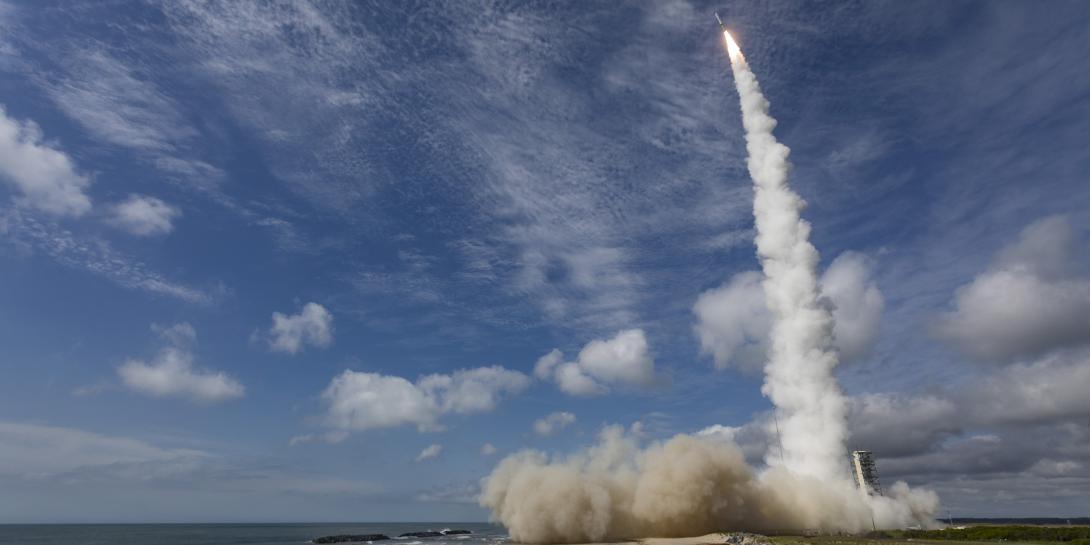Rapid, Resilient and Reliable Are GEOINT’s Three Rs for 2035
An integrated geospatial intelligence (GEOINT) operating environment supporting the warfighter, first responder and policy maker continuously by 2035 is the goal of the CONOPS recently released by the National System for Geospatial Intelligence (NSG). Achieving this goal will require advances in technology, standards setting, automation and interoperability across government and commercial systems.
The CONOPS focuses on three end states: an integrated GEOINT operating environment, or IGOE; sensor to effect, or S2E; and GEOINT superiority from space, or GSS. Achieving these end states will require technology and capability advances along with new workforce skills and partnerships featuring interoperability across classification levels.
The IGOE would enable “seamless coordination through fully leveraged automation, trusted and accessible data, a diverse and skilled workforce, strategic partnerships and common GEOINT standards,” the publication states. The Defense Department and intelligence community would collaborate to bring this about by pursuing complementary steps and avoiding unnecessary duplication. Organizational stovepipes would be reduced as would resistance to sharing classified information among partner organizations. “The metric for success in IGOE is seamless interoperability and communication among all partners and their respective platforms,” the CONOPS offers. “Customers will wait only minutes for data transfer across the NSG.
“This horizontal integration of information transmitted across domains is critical to the 2035 vision,” the CONOPS declares.
S2E also is vital for the 2035 goal, as its automated processes are necessary for real-time processing and delivery. “This vertical integration of sensor transmission directly to the end user is critical to the 2035 vision,” the CONOPS states. “The customer cannot afford time-consuming ‘human-in-the-loop’ practices, thus encouraging the operating environment to adapt to the more immediate transmission of GEOINT and geospatial information to the customer.” This also will open the way to vital information sharing with nontraditional customers such as emergency responders. Local civilian authorities could be alerted to fire outbreaks immediately by GEOINT sensors, for example,
GSS will be essential to maintain supremacy in the space domain, the publication offers. Its approach will be to provide a web of government, commercial and foreign remote-sensing resources that cover the planet. This will be vital for both land surveillance and continued monitoring of the space domain, the CONOPS states, adding, “Great power competitors are investing exponentially in space—a domain critical to providing the warfighter, first responder and policy maker with on-demand GEOINT.” Again, automation will play a key role in enabling this end state.
The CONOPS offers many recommendations for achieving these three end states. Automation must include data standardization, operational security with minimal human involvement, data set development and machine-to-machine translation of automated results. The acquisition process must be modernized and fast-tracked from research and development (R&D) to final capability delivery. Advances such as greater onboard processing capabilities for future sensors should be assessed. Key technologies include ubiquitous data storage, quantum mechanics for predictive modeling and better high-speed wireless network bandwidth.
The GEOINT functional manager, GEOCOM and GEOINT mission managers should bring together partners to architect a unified interoperable means of generating user-friendly GEOINT at the lowest possible classification level, the publication offers. Customer needs would be determined by a “robust customer discovery effort,” and a decision priority framework would consider roles and responsibilities along with acceptable risk tolerance.
Building the workforce for this GEOINT future would require a dynamic and multitrack talent development program to recruit and retain people skilled in the new talents needed for this architecture. It will require standardized training programs across the NSG “for a collaborative culture of innovation” along with a multidisciplinary understanding of the GEOINT process. A cadre of specialists would guide the development of advanced technology capabilities such as automation, augmentation and artificial intelligence, machine learning, computer vision and human-machine teaming.
At the heart of this GEOINT thrust will be technology, both as a goal enabler and a method of operation. The CONOPS calls for the NSG to upgrade its systems and partner with industry to address shortfalls and leverage innovation early in the R&D process. This must include a “thorough assessment” to ensure new technologies are resilient against adversarial threats. The current slow acquisition environment must give way to a faster process built around proactive planning to prioritize technology streams early and foster the growth of innovation, the publication says.



Comments